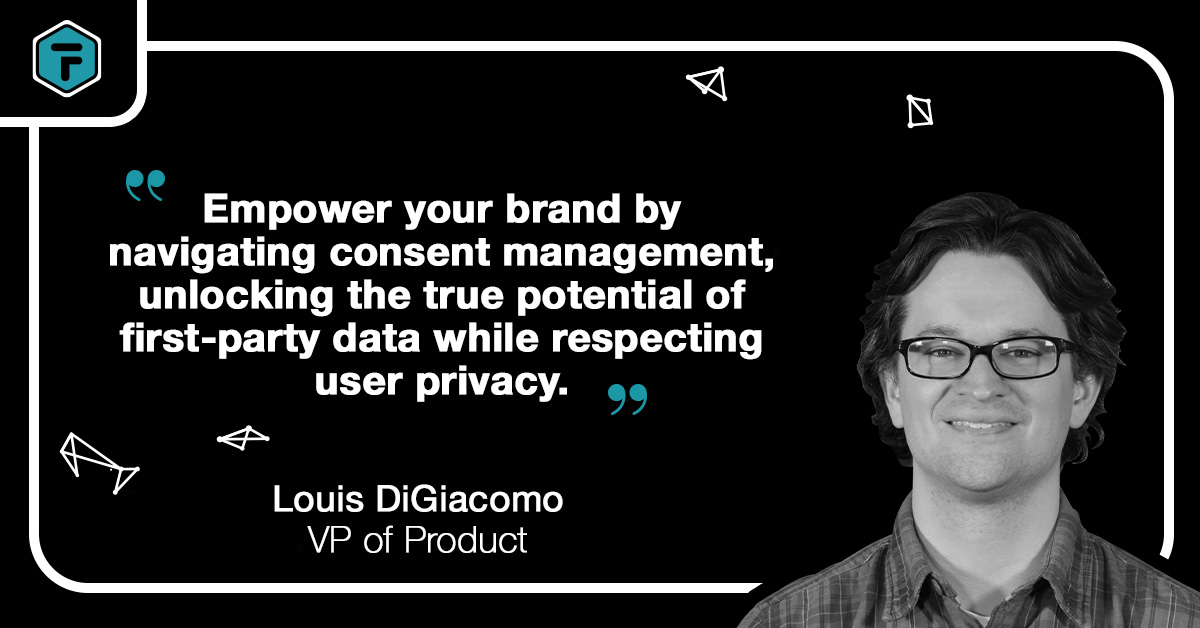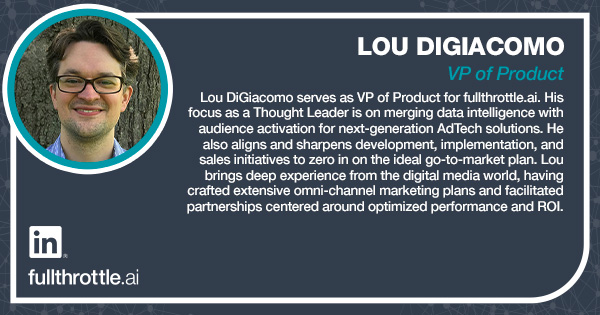
By: Lou DiGiacomo, VP of Product
Understanding the Differences and How fullthrottle.ai® Interacts With Each
Most of us know privacy concerns are at an all-time high. This has led to the development of various tools to gate user data behind an on-site consent mechanism, such as consent management technology (CMT) and the browser location prompt. But how do these tools differ and how does fullthrottle.ai® interact with each of them? Let’s demystify these tools, with valuable insights into how fullthrottle.ai® assists brands in consent management while generating valuable first-party data.
Top Takeaways:
- CMT controls script activation on websites based on user preferences.
- Browser location prompts coordinate location-specific opt-ins for various technologies.
- fullthrottle.ai® requires opt-in from both CMT and browser location prompts to operate, if both are present on site.
- CMT and browser location prompts serve different purposes in managing user consent.
- fullthrottle.ai® empowers brands to own and transform their data in a cookieless world.
CMT vs. Browser Location Prompts
In an era where data privacy regulations, such as GDPR and CPRA, are becoming increasingly important, brands must be well-equipped to handle user consent management. CMT and browser location prompts are two tools that play a crucial role in obtaining user consent for data collection and processing.
What Is CMT?
Consent management technology is a privacy preference center pop-up that allows users to choose their data consent preferences. It controls what scripts (cookie or non-cookie) are activated on a website, with rules set by the brand. Examples of CMT providers include OneTrust, CookieBot, and Trust Arc. CMTs were initially built for GDPR notification and, along with a brand's Privacy Policy, facilitate agreements between website owners and users concerning data usage. CMTs are also referred to as Consent Management Platforms, or CMPs. To learn more about best practices for privacy management and CMPs, check out our Privacy Tips.
What Are Browser Location Prompts?
On the other hand, browser location prompts are standardized pop-ups that ask users to allow or block location sharing for a particular site. If a user opts in, they share their location with all active technologies on the site that request location data. Examples of technologies that may ask for location data include inventory or closest store sorting, Google, and fullthrottle.ai®.
What’s the Difference Between CMT and Browser Location Prompts?
One of the key differences between CMT and browser location prompts is their purpose. While CMT allows users to manage their data consent preferences, browser location prompts focus on coordinating location-specific opt-ins for various technologies. Each tool plays a distinct role in managing user consent, ensuring that brands are compliant with data privacy regulations and respecting user preferences.
How fullthrottle.ai® Integrates With CMT and Browser Location Prompts
fullthrottle.ai®, a first-party data generation platform, plays a significant role in helping brands navigate the complex landscape of consent management. Our platform generates first-party data for a cookieless world by transmuting website visitors into first-party addressable households. This data can be used for audience activation, omni-channel targeting, and audience modeling.
To operate effectively, fullthrottle.ai® requires opt-in from both CMT (if in use) and browser location prompts. A brand may add fullthrottle.ai® to their CMT permissions. However, it's important to note that many CMTs have not yet evolved to accurately label non-cookie-based technologies. This is not a major issue, as users typically make opt-in choices based on higher level philosophies, e.g., whether or not they want to be tracked in exchange for a customized user experience, etc., ensuring compliance with their preferences.
Understanding the Relationship Between CMT and Browser Location Prompts
Consider this analogy: you're taking a brand prospect out for bottle service at a nightclub. Bottle service is only available in the Enterprise Lounge, located on the rooftop of the nightclub.
CMT acts as the bouncer, deciding who gets in the nightclub in the first place, while the location prompt represents the Enterprise Lounge door. This Lounge is a feature of the nightclub and while not necessary for the nightclub to operate that night, it’s a powerful addition that when unlocked, gives patrons the best experience at the club.
Both permissions are necessary to access the Enterprise Lounge for bottle service. fullthrottle.ai® operates only when both the bouncer (CMT) and the Enterprise Lounge door (location prompt) grant access.
What Makes fullthrottle.ai® Different
fullthrottle.ai® diverges from traditional third-party data companies by empowering brands to own and transform their data. By seamlessly integrating with CMTs and browser location prompts, fullthrottle.ai® offers a comprehensive solution that respects user privacy, while enabling brands to target and measure their marketing campaigns effectively.
Seismic shifts in the digital world have made it more challenging for brands to reach their target audiences. As a result, navigating user privacy and consent management is essential for marketing success in today’s digital landscape. By understanding the differences between CMT and browser location prompts, and how fullthrottle.ai® interacts with each, brands can better manage user consent while generating valuable first-party data.
The Synergy of Consent Management Tools and fullthrottle.ai®
By understanding the differences between these tools and how fullthrottle.ai® interacts with each, brands can better navigate the complex landscape of user privacy and consent management. With fullthrottle.ai® at the helm, brands can confidently embrace a future that respects user privacy while unlocking the true potential of their data, leading to more successful marketing campaigns and stronger customer relationships.
If you’re ready to build your own first-party data the responsible way, book a demo and see how our patented AdTech can hand you new audiences.




